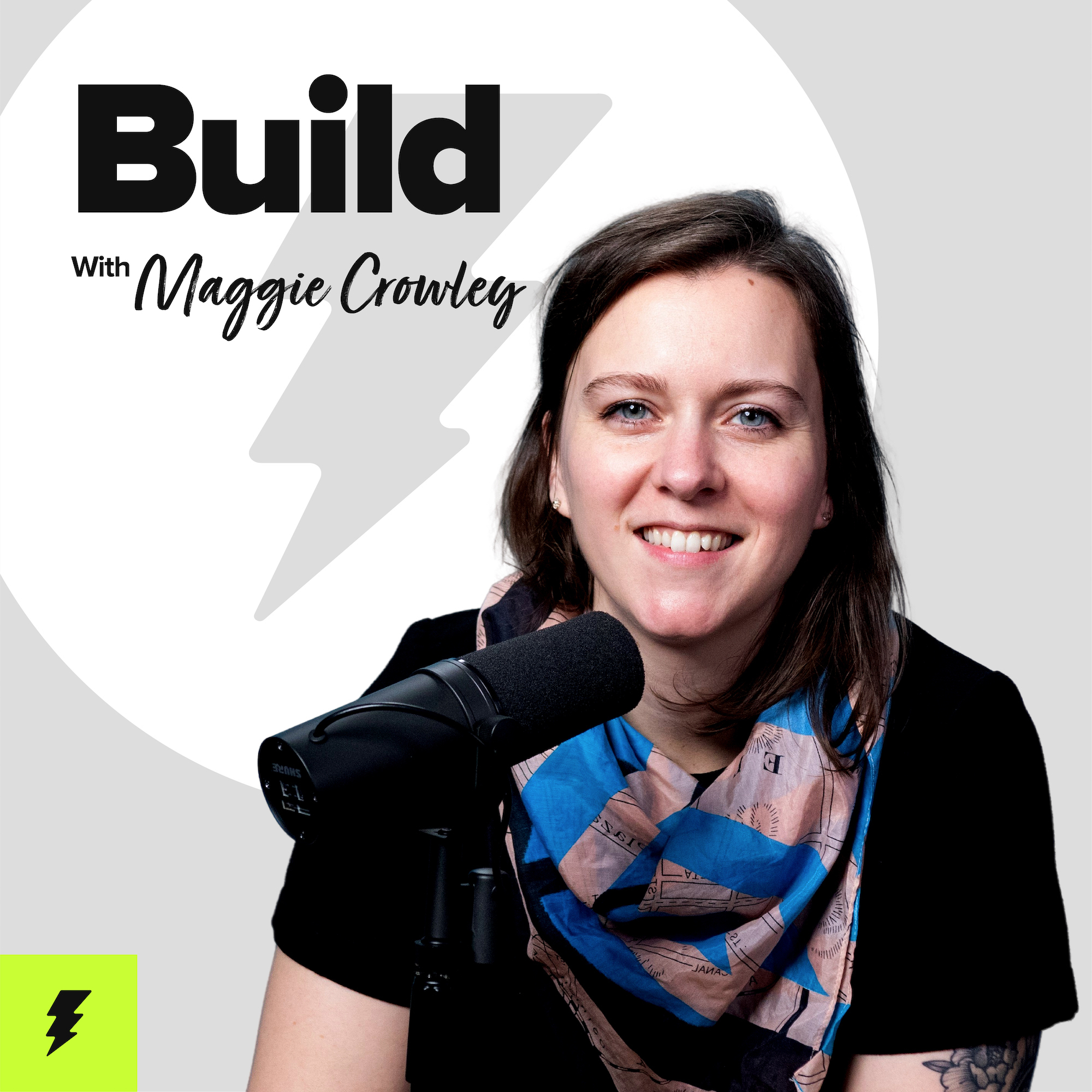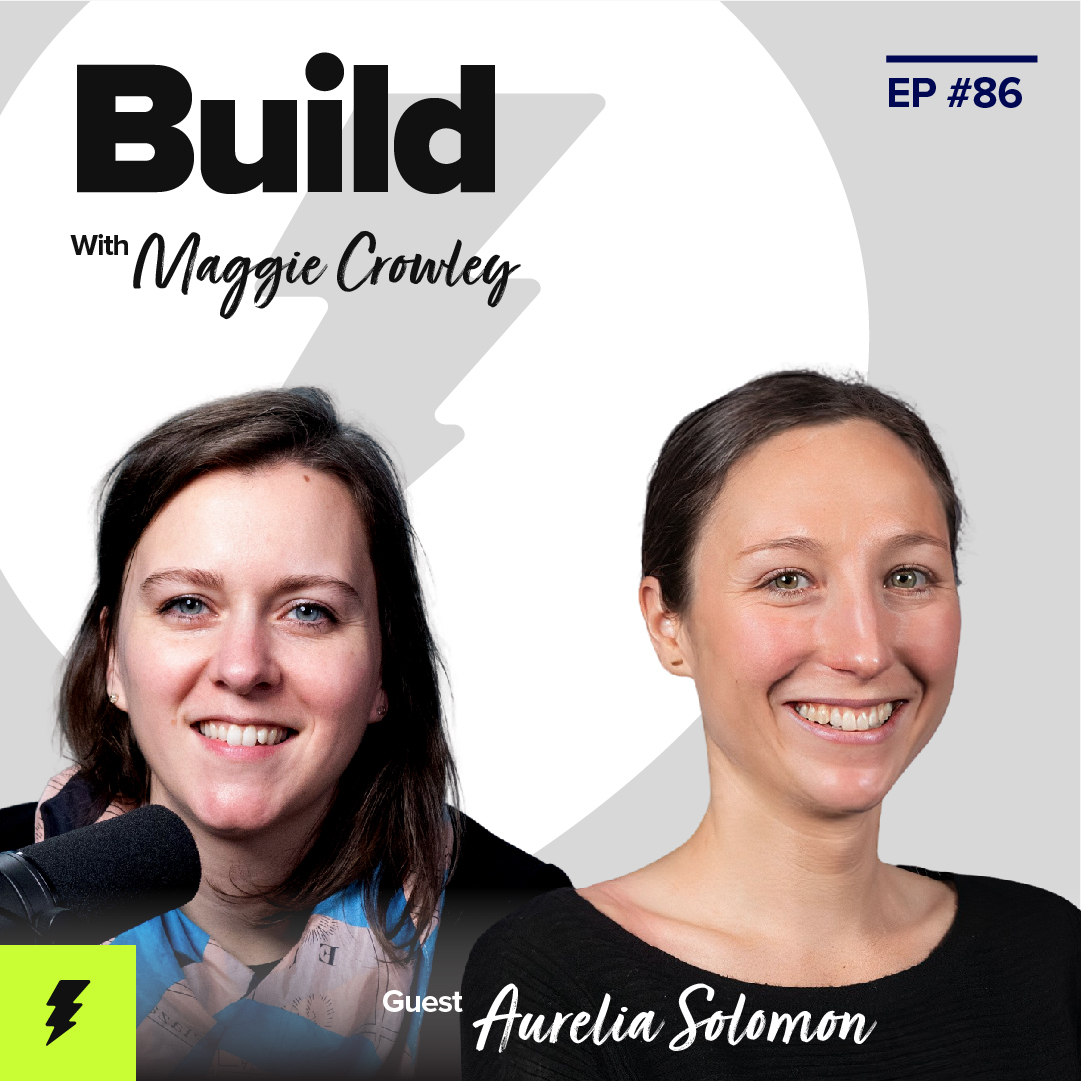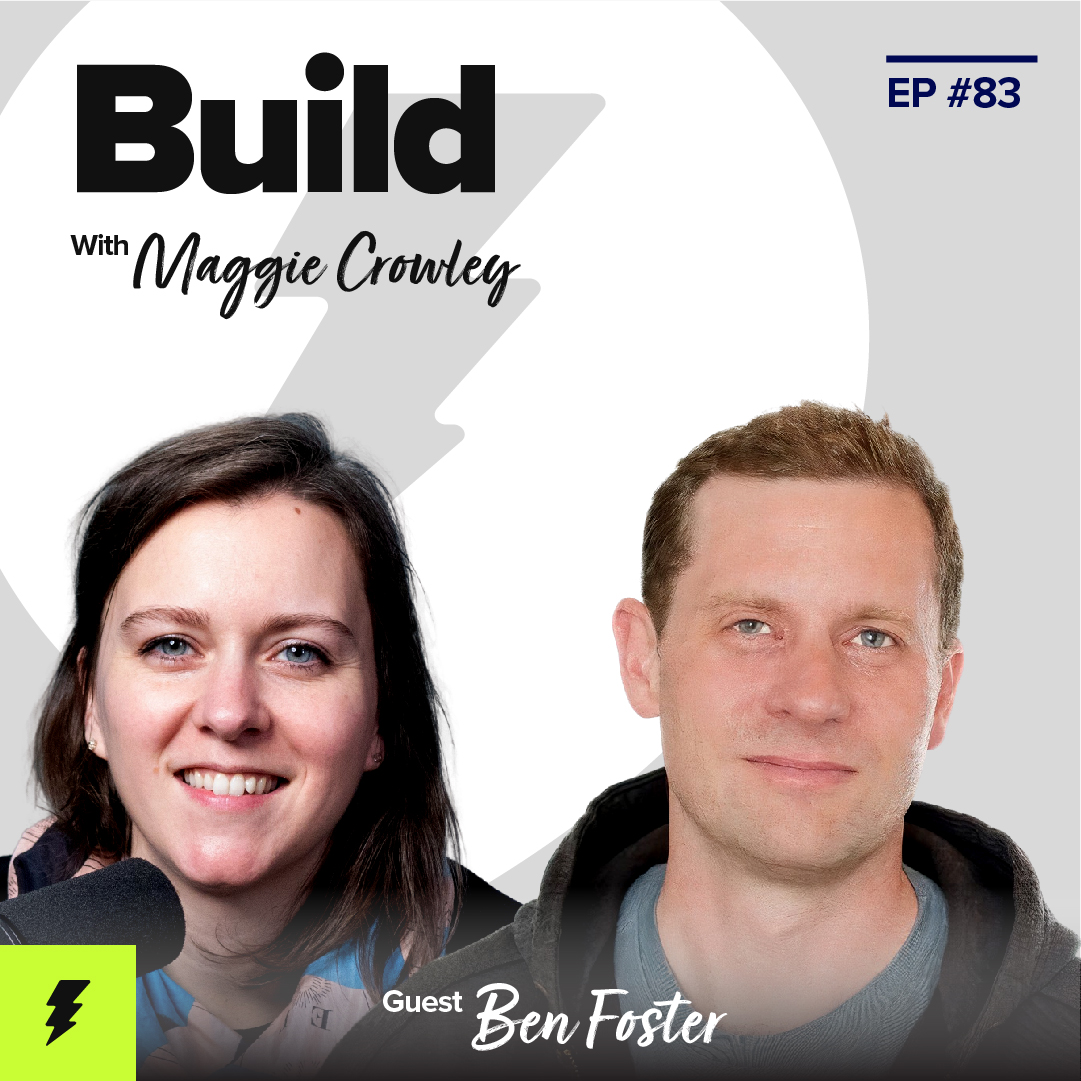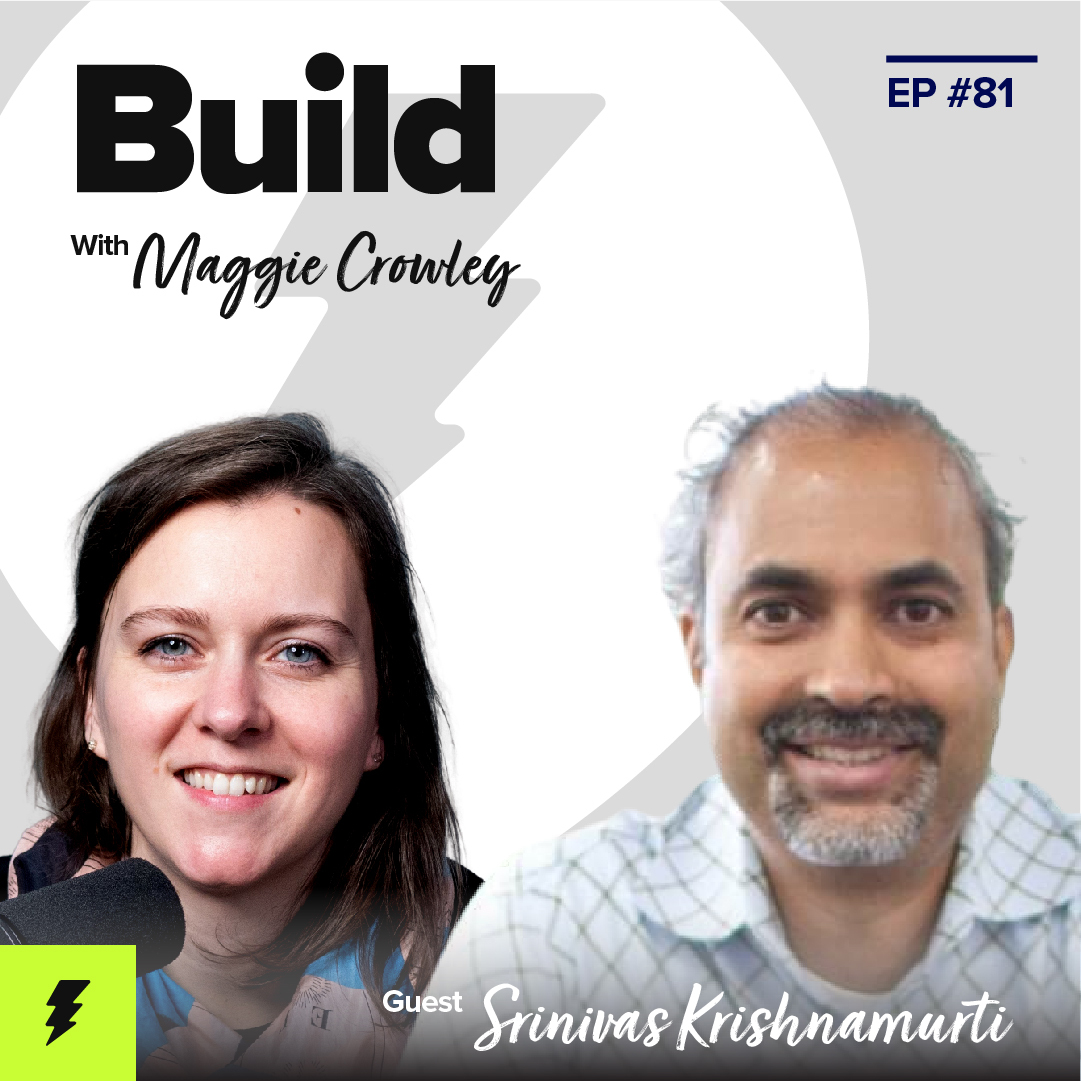Giving Presentation Feedback as a Manager
- 0.5
- 1
- 1.25
- 1.5
- 1.75
- 2
Maggie: What's up? Welcome to Build. This is Maggie. Today I have a short one on a topic that I've already covered, but this time I'm going to share how I've adapted my advice on the topic for managers specifically. A while ago I covered the steps I use to create great presentations, and that's still the best advice I have on the topic. But of course, when you become a leader and a manager or a manager of managers, et cetera, what happens when someone else is creating a presentation and you, instead of writing it yourself, have to give feedback. This is my approach to feedback for the big presentations. You know the ones I'm talking about. The ones where getting it right could have a huge impact on how someone's work is perceived or oftentimes where the downside risk or getting it wrong could set a team back by weeks. As managers, it's super easy to forget how much a person or a team will agonize over that big presentation. So this is first a reminder, not to forget that, and second, how I match feedback and coaching to that kind of presentation. And I'm sharing it because I actually mentioned this method in passing to someone the other day, and the reaction was something like," Wow, that sounds super micromanage- y." And long story short, I sent them an example from a recent presentation feedback that I gave and they completely changed their minds and said something like," Wow, I wish I had gotten this kind of feedback before." So I figured it might be useful to share and maybe it'll be useful in your day to day. So here are the steps that I go through and I'm going to dig into each one. But first, just to give you the lay of the land, the first step is, listen all the way through then write down how the presentation does on key categories, which are explaining and hitting its goal for the audience, clarity, pacing, evidence, logic, so what. Decide whether your feedback is worth it to begin with and then show, don't tell. Coach by showing what your feedback means and then check yourself for bias. So starting from the top, here are the details on each step that I go through. First, listen all the way through. You have to ask the person who's making the presentation to send you a video of them doing the presentation or giving it to you live or worst case, read through the entire deck or at least try to get through it before you say anything. So you want to see everything they're going to say, take it all in. Then what you want to do is evaluate whether you understand from listening or reading a bunch of things. So first goal and audience. So you want to know what is the point? Who is the audience? And does the presentation achieve the goal of getting the audience that outcome? The second, you want to understand clarity. So, how hard do you have to think to understand the message? How clear is the message or the points that they're trying to make? And while I'm going through these different points, I'm opening up a note doc on my computer and typing it out or I have a piece of paper and I'm writing it down. I'm doing something to sort of run through each of these things one by one. So we talked about goal and audience. We talked about clarity. The third one is organization. So until you are expert level, every presentation should follow or at least start with the outline of story, problem, solution, examples, CTA, or next steps. So go through the presentation and literally write it down and check against that framework. If it's a presentation for an executive team, think about whether they actually have the patients for that first story part and if not, I would always suggest a team use the mentor principle and just hit the audience with the problem and the solution at the front so that they know where you're going. Big reveals can be generally a bad idea for someone with little time or context. So I always think about who is the audience. So the first point and does the way that the person who's making the presentation organize the story match that audience. Fourth one, pacing. Does the presentation start strong and then peter out or does it start weak and then only near the back half get really good? Does it lag all the way through? Does it go too quickly? Does it take too long to get to the point? You want to think about how long overall is it going to take and where do you start to lose attention. Oftentimes, I'll find that when I start listening to a video, this'll be whenever I pause the video or I find myself getting distracted and checking slack or something, that's the point at which I've lost your attention and try to pay attention to that and mark it so that the person understands where that's happening. The next thing I look for is evidence and logic. Is there enough evidence to make the story or the message or the recommendation I'm trying to get to credible? Are the examples specific? Is there real data in the presentation itself or are they linking off to an analysis or are they using weasel words, which someone on my team taught me about. These are words like many or very, or any adjective that they're using without qualifying that reality. You want to watch out for those and mark them down to make sure you can come back to them. And then the last thing I look for is the so what. And that is, in my opinion, the absolute key to this whole process is you have to know if there's a point to the presentation, which sounds crazy, but it's actually sometimes not clear. And if there is a point, is it easily understood? So that means you should know why the presentation matters, why the presentation is worth the audience's time. You should understand what the person or the team plans to do next after the presentation. And if you're not sure on this one, the fastest way to understand what the person or the team wanted to get across is to ask them on the side something like," What are you hoping your audience takes away from this?" And you'll get back something like," I want them to have confidence that we understand problem A and have a solution. And that the next step is A, B and C." And then use that input for your feedback because oftentimes whatever they're going to say in that sentence, if you're having a challenge with the so what, when you're watching it or listening to it, that means that that hasn't come through clear enough. So we've gone through goal, audience, clarity, the organizational structure of the presentation, pacing, evidence and logic, and the so what. So hopefully you've been writing down your thoughts on each ones, and that means writing down what you think is good and works, what is not good, or what does not work for you, and then what you think should be specifically different to help get it to good. So you want to have all those notes set up. And again, I'm going into this much detail because it's only worth doing this for those really big presentations that matter. If it's just a quick presentation or a quick sharing out of a topic, it's not worth doing all of this. But if it's a big presentation, then it's worth big feedback. So at this point you have a decision to make, and I always make sure I think about this and that's, is it worth giving feedback at all? There is no reason to give feedback to give feedback. And sometimes the best thing you can do is to let it go and allow them, whoever it is to hear feedback from someone else. So maybe if you've been coaching someone on a specific type of feedback, and for whatever reason, they're just not hearing it from you or they don't know how to put it into action. Sometimes if it's a relatively low risk situation, you might just want to let them get that feedback from someone else because it might be more impactful that way. Or oftentimes I also find that the presentation is actually good enough and you don't need to waste time on a small detail just to prove that you knew something or that you could give feedback. I think absolutely the best outcome when someone's had to do something like this for feedback is when you don't have to do anything. The presentation lands well enough, and the team's going to feel amazing when they give it, knowing that they did it themselves. However, if it is worth giving feedback, if you think that the thoughts that you have from going through the first part of this are meaningful enough and would have enough of an impact on how the presentation goes, you have to think about how much feedback you want to give and what method you want to give it. If you decided to give that feedback, here's how we think about the how. Again, keeping in mind that the point of this whole exercise is to help the person or the team get to the outcome that they're looking for. You want to match your feedback to what will work best for them. So if your feedback is pretty simple, things like maybe an unclear message or word here or a small change, or a little bit of formatting feedback, these can totally be done just through a written comment maybe in the Google side or whatever they're working in. And this is generally speaking I think what probably everyone listening to this does. So if you do that, run through, make the comments, and then send the person who you're giving feedback to a message summing up those comments and calling out the most important one. I would never recommend just randomly dropping comments in a Google doc just because you're not giving them any context. You're not giving them any sense of priority. And it's really easy to misinterpret those sort of written cons. So that's step one or option one. Option two is that if your feedback is more fundamental, if it's bigger, if it's structural, if there's really big story arc things that you want to explain, especially if it's stuff that's hard to articulate in a comment or a written comment, those are the things that, in my opinion, aren't possible to communicate well via a written comment or a Slack message. And if you try, oftentimes your comments are going to come across as harsh to the person listening. So examples of comments like this that I don't think help our work or really do anything for anyone is if you find yourself putting a comment like," This doesn't make sense," or" This isn't clear," or" I don't understand this," or" Why did you do X here?" Or" Why not Y?" Those are the types of comments that would signal to me that you need to go a little bit deeper to help the person that you're talking to. And another way to identify if you're in one of these positions is if you find yourself writing a paragraph in a comment trying to explain yourself, it's probably way too much feedback for this method. And again, I'm just going to keep repeating this. The reason why we give feedback is to help someone make something better and to coach them on how to make it better. If a couple of comments isn't going to get through, just adding more comments isn't going to help them, and it's probably going to hurt them and make it really hard for the person to do better. So instead, here's what I do. I will end up actually making a copy of the deck or the side, depending on the type of feedback I want to provide. And then I'll make another version of that thing that explains what I think will work better. That sounds like a lot, but honestly it takes five minutes to do because you don't have to make it perfect. You don't have to think about how you're going to articulate this comment to help them understand what you mean. Instead, you just have to do enough to get your point across. And so some examples of what that looks like. Sometimes what I'll do is I'll make a copy and I'll rewrite a couple of slide titles and maybe move the slides around to help someone understand what I think they could change about the story arc and how to increase the clarity of what they're saying, or maybe I'll just reorder the slides to explain quickly how I think another way to do whatever they're doing would be. Sometimes I'll take one slide and make a copy of it and then tweak the design to make it a little less cluttered or easier to get at a glance, or highlight where I would add something in, or maybe sometimes I'll take the thing as is and just add an empty slide with two words on it to block out where I would add something. And then what I do is make a video that walks the person through what I think should be different and why. So I take that aversion that I've made, I fire up Drift Video or whatever you want to use and I make a video that explains what I think should be different. And I'll often include if I have feedback on how to say something or how quick or slow or how in- depth to go, do a little example run through of what that would look like for them to see what the feedback is. And again, this will take maybe another five minutes, seven if you're rambling and you're not super clear with your feedback. And it allows you to give the person feedback and walk through both on how you would change the artifact and how you would change the narrative, and how you would sound in the presentation, if that's feedback that you want to give. So again, what you do is you take all the feedback that you wrote down on the first step when you went through the different aspects of the presentation and then you think about what would that actually look like in terms of the slides and the story, make a copy of those things, sketch out what would be different, and then record yourself explaining that. Because this isn't just me giving feedback on a presentation or a deck, you're giving feedback on the whole presentation on how the person's going to move through those slides and you're explaining to them, and you're using this as an opportunity to coach them on what can be different. So I want to add in here at this point one thing that you should avoid or really think deeply about before you get into it and that's style. Everyone has a different presentation style, and that's absolutely okay. If someone's style doesn't land for you, you need to explain what about it and why it doesn't land. And I would say that this is probably the thing I'm most careful about. It's the hardest kind of feedback to give and it requires you to have a really high trust relationship with the person you're giving feedback to. And if you have something you want to say and you don't know how to say it, I would call that out, saying that you're unsure of how to give this and this is an opinion of one. But this is also where I find bias shows up most frequently, especially if the feedback that you're giving is about tone or forcefulness, or if you find yourself wanting to say something like executive presence, these are really biased and loaded words, and I would avoid them. Instead I would think about, is it that the person is not matching the seriousness of the topic to the words that they're saying, are they too serious? Are they not serious enough? Are they going too slow, too quickly? Are they nervous? Those are the types of things that maybe I would call out, but I would really try to avoid stylistic feedback and focus on the message, the clarity of the message, and the content and let them figure out for themselves what kind of tone works for them. So to recap, you start by listening or reading all the way through, and you want to evaluate the goal, the audience fit, clarity, pacing, evidence, and logic, and the so what, as well as the organization of the whole thing, then you want to check and make sure it's worth actually giving any feedback. If it is worth giving it and you have more than a couple of comments, this is the right opportunity to show, not tell. Make them a video explaining what you mean. It will save you time and saves them time as well. And just remember your job is to help the team shine. So put some effort into it and everyone is going to win. And there's absolutely nothing better in my opinion, than taking those 10 minutes and seeing someone crush that big presentation. And one last tip for new managers, you might find yourself wanting to remake everything into what you would have done. Don't do that. You're not a better manager because you're giving more feedback or super ultra detailed feedback. What makes you a good manager is helping your team. So take your own ego out of it, make it about them, make it about coaching them, and everything's going to go better. All right. So that's what I do when I'm helping a team out with a big presentation. Let me know what your tips are. Let me know what your strategies are and how you have helped other people do better. We'd love to hear it. Thanks team.
DESCRIPTION
Maggie's already given her best advice on how to deliver a great presentation. But what about enabling your teams to deliver their best presentations? That's what Maggie explores in this episode. Today, Maggie shares the five core elements she looks for in a great presentation, and how she provides feedback to her team based on those five points. This episode is a must-listen for managers new and old.


![[Rebroadcast] Answering Your #1 Question: What's a One-Pager? (With Daphne Funston)](https://files.casted.us/17f92f42-13f8-40d9-b4ea-2cfd58a201ec.jpg)


